Becoming Horological Art: My Transformational Experience With Alexa Meade And The Audemars Piguet Equation Of Time
by GaryG
“It’s very intense – I find things that are inside the person and bring them to the surface.” ̶ Alexa Meade, Facebook Live interview, September 5, 2017
It would be relatively easy, and I think pretty interesting, for me to tell you the story of my two days this past summer with artist Alexa Meade and her team simply by reviewing the mechanics of how our preparations and time together unfolded.
We’ll get to all of that, but there’s more: the flood of sensations and emotions that came from considering why time and space are so important to me and from inhabiting a work of art that melded my vision of myself with the artist’s interpretation and self-expression.
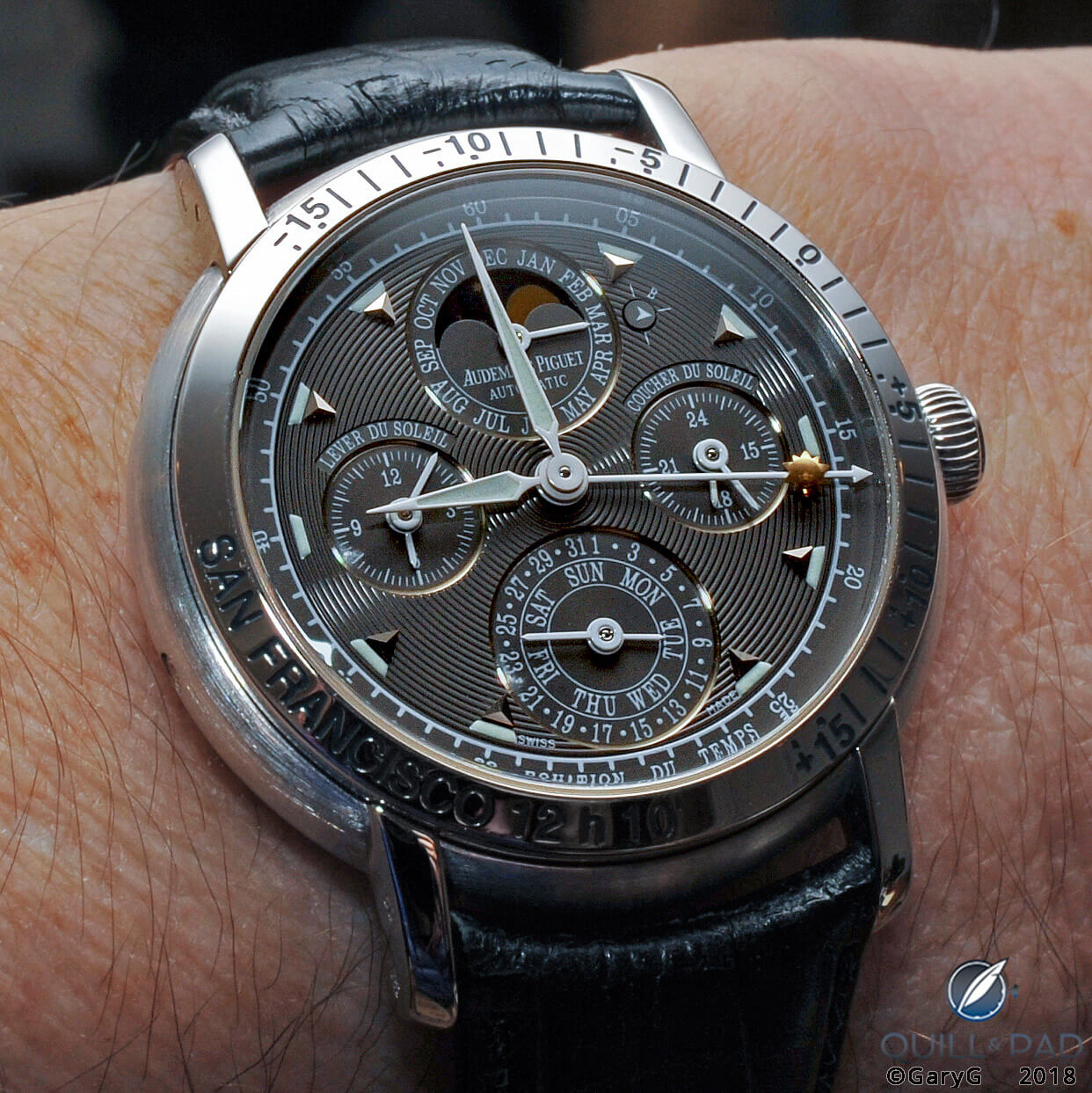
Starting point: the Jules Audemars Equation of Time by Audemars Piguet
When I first met Alexa Meade at Baselworld 2017 through the generosity of watch brand Maurice Lacroix, (see Watches And Art: At Baselworld 2017 With Artist Alexa Meade And Maurice Lacroix), her questions on the history of timekeeping led us to a dialogue about the difference between time as shown on a sundial and that shown by a clock: the phenomenon known as the equation of time.
As it turns out, one of my first truly substantial horological acquisitions had been the watch shown above, the Audemars Piguet Equation of Time: a watch that in addition to incorporating a perpetual calendar and moon phase, shows both the equation of time and the corresponding time of solar noon each day and the times of the day’s sunrise and sunset for a chosen location.
When I decided to follow through on my long-held desire to commission a work from Meade, we rapidly agreed that the topic of timekeeping, and in particular the representation of astronomical phenomena in timekeepers, was the obvious focal point for the project.
Alexa Meade and the art of transformation
Alexa Meade’s art is based on a sort of magic: the ability to transform the way that we perceive dimensionality.
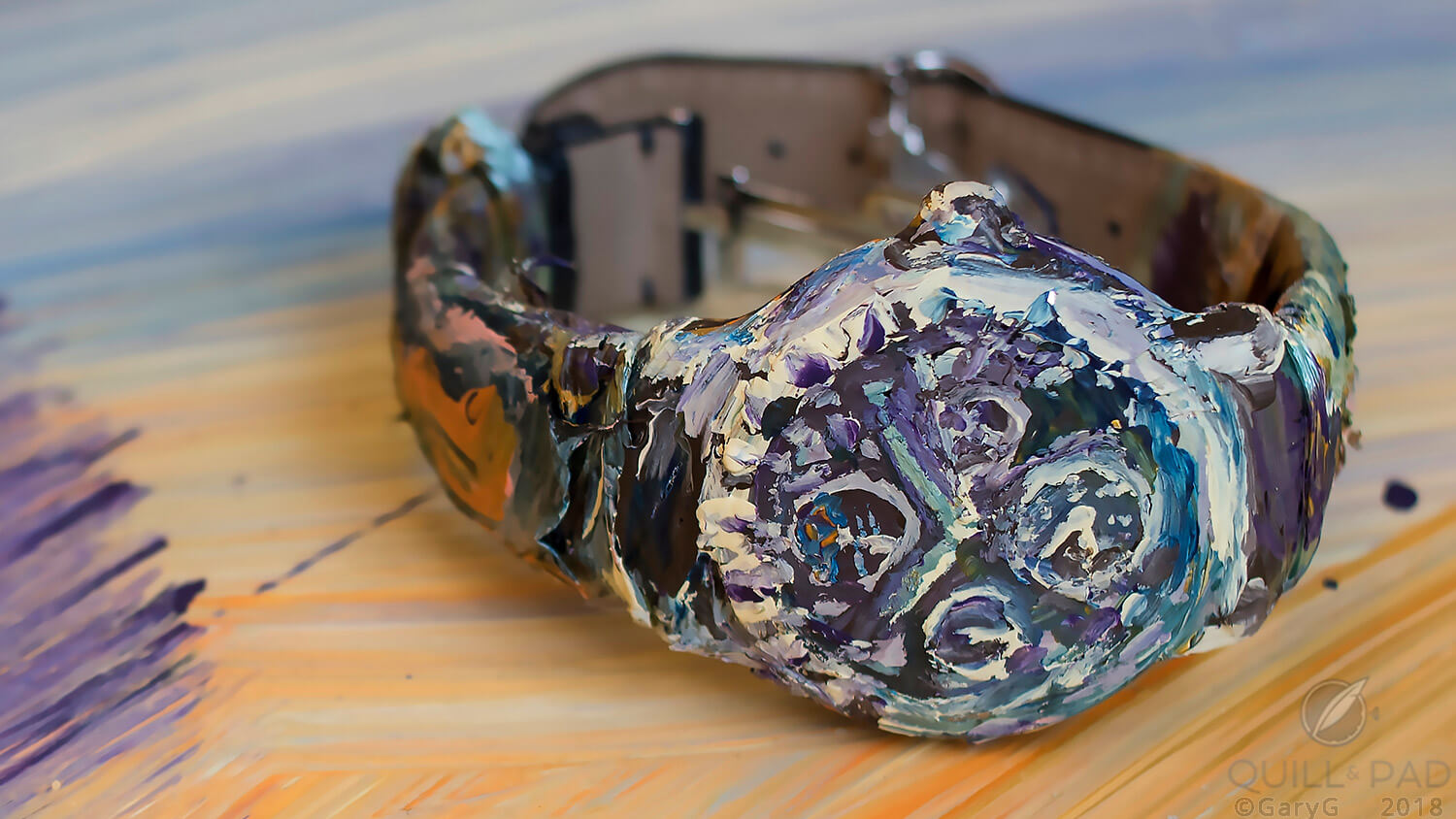
Timepiece transformed: Audemars Piguet Equation of Time painted by Alexa Meade
It began with her study of shadows and how they could be represented with paint; moved rapidly to her trademark style of painting people and other three-dimensional objects in a way that renders them two-dimensional to the eye; and more recently has expanded into the use of stop-motion video, the visual awakening on video of her seemingly static painted subjects, and the perception-bending insertion of what we see as two-dimensional actors into the cut and thrust of three-dimensional urban life.
For our project, we decided to include the Equation of Time watch on my wrist as part of my visual transformation from three dimensions to two and also to place me in a landscape that provided a sense of the broader universe that surrounds us, reflecting the watch’s astronomical complications.
Getting underway
Not too long after I arrived at the Meade studio on a sultry Los Angeles summer day, five of us – Alexa, three art assistants, and I – went to work creating the immense backdrop for the shoot.
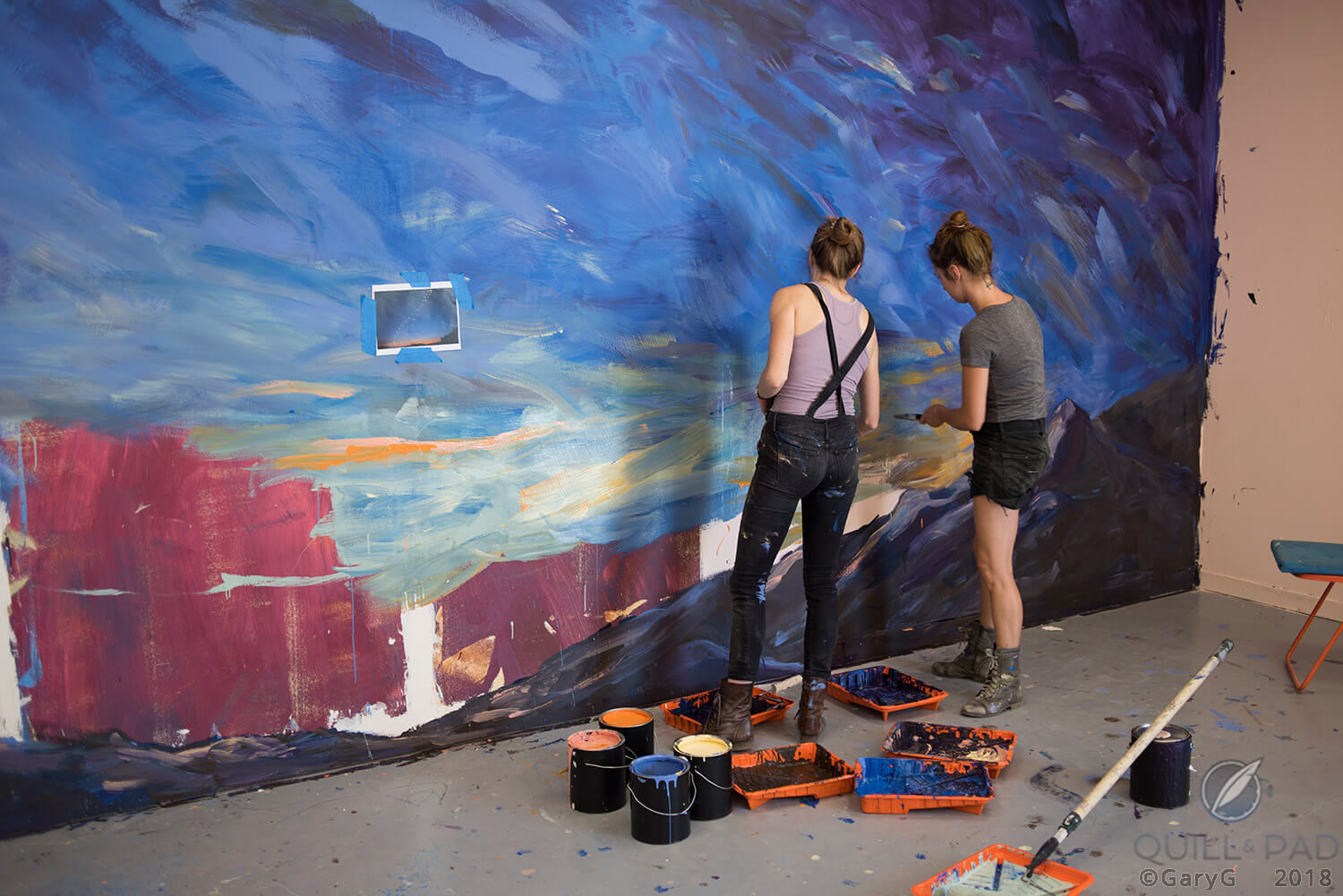
Setting the scene: twilight sky backdrop
The inspiration for the background was a photograph of the Analemma, the figure-eight pattern in the sky traced by the sun through the course of a full year as seen from a fixed location at the same time each day.
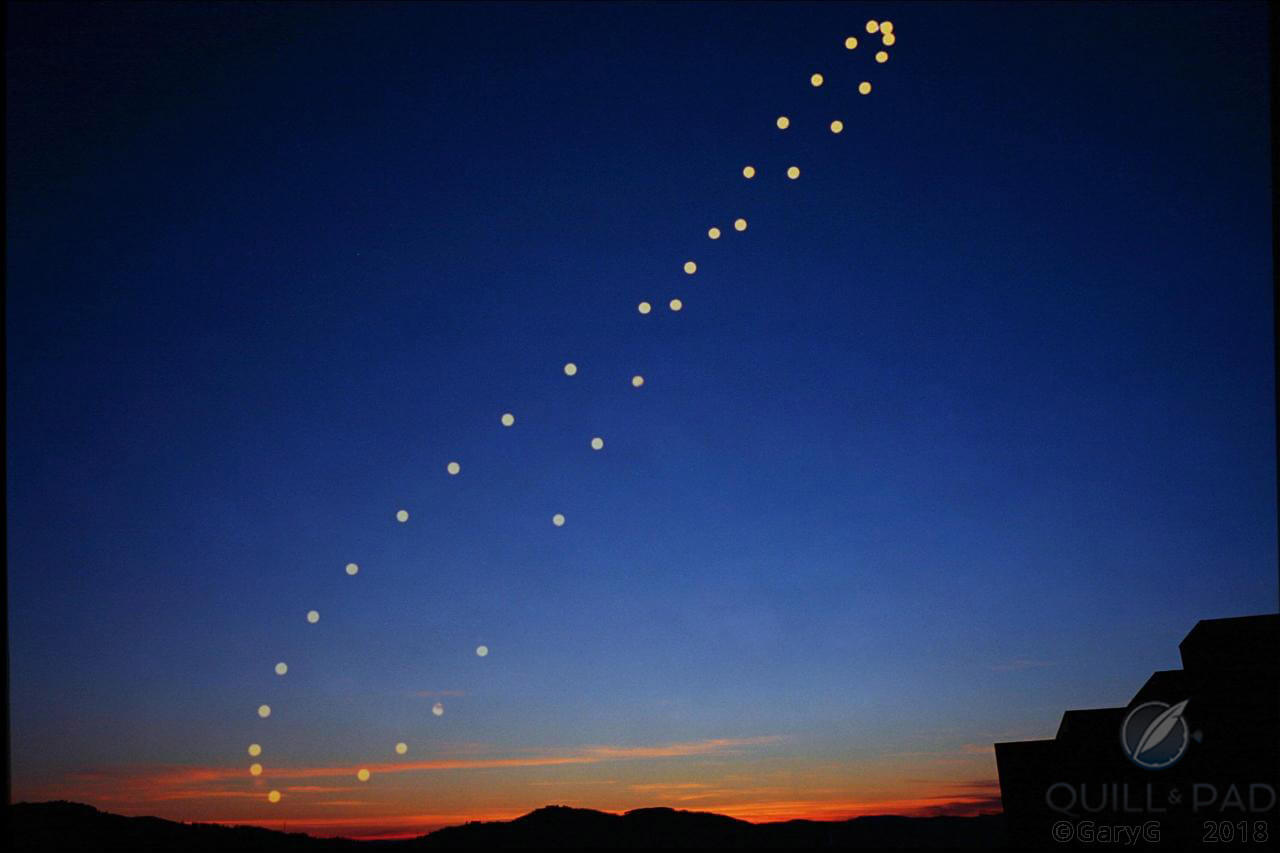
Visual inspiration for the sky scene, with analemma
Painting the 30-foot-long backdrop and the floor in front of it was real work. It took three attempts at the floor before Meade was satisfied with its appearance.
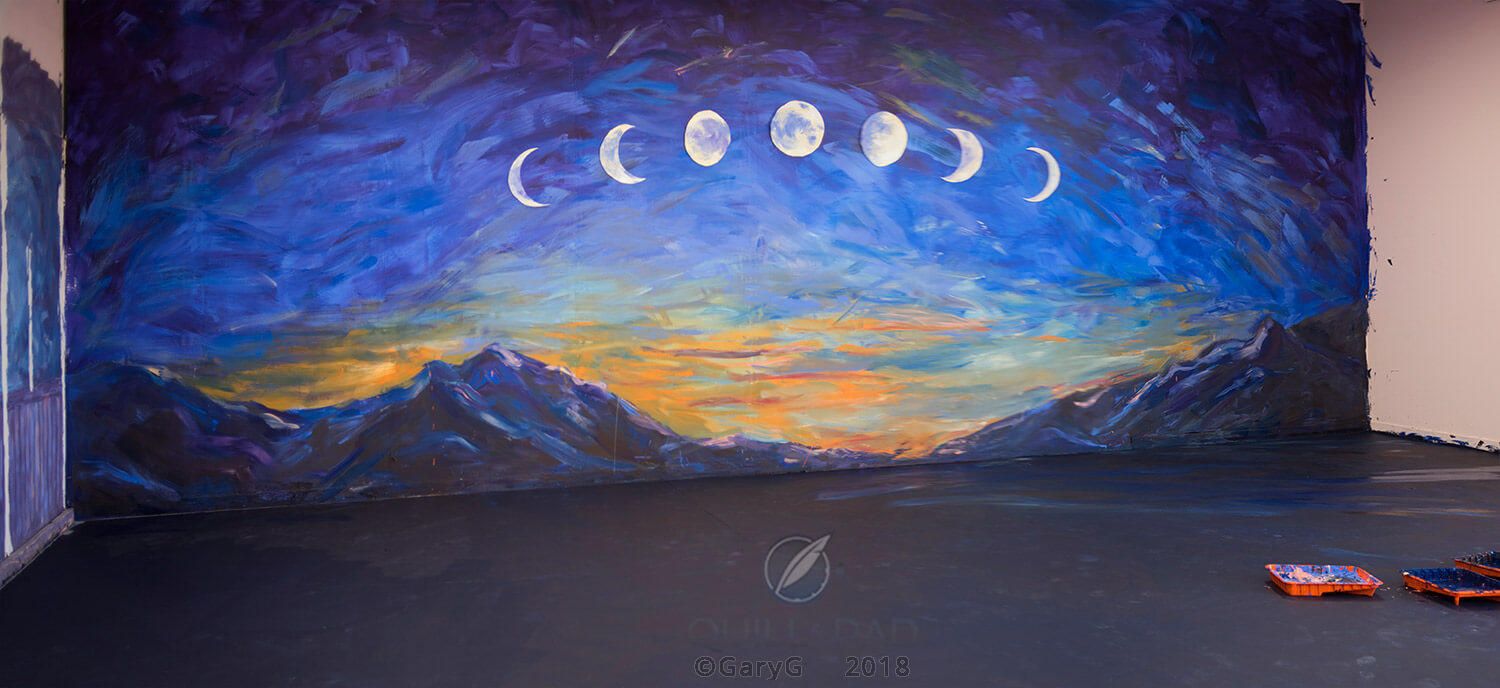
Painted warehouse wall before completion of final floor painting, with moon disks in place
Once we were close on painting the wall and floor, assistants Ashley and Britt split off to start making props like the bench I would sit on and cutting out and painting the “moons” and “suns” that would make up the astronomical displays. I got out my notebook and began to calculate the dimensions of a 12-foot high representation of the analemma as seen from Los Angeles to guide the placement of the “suns” on the wall.
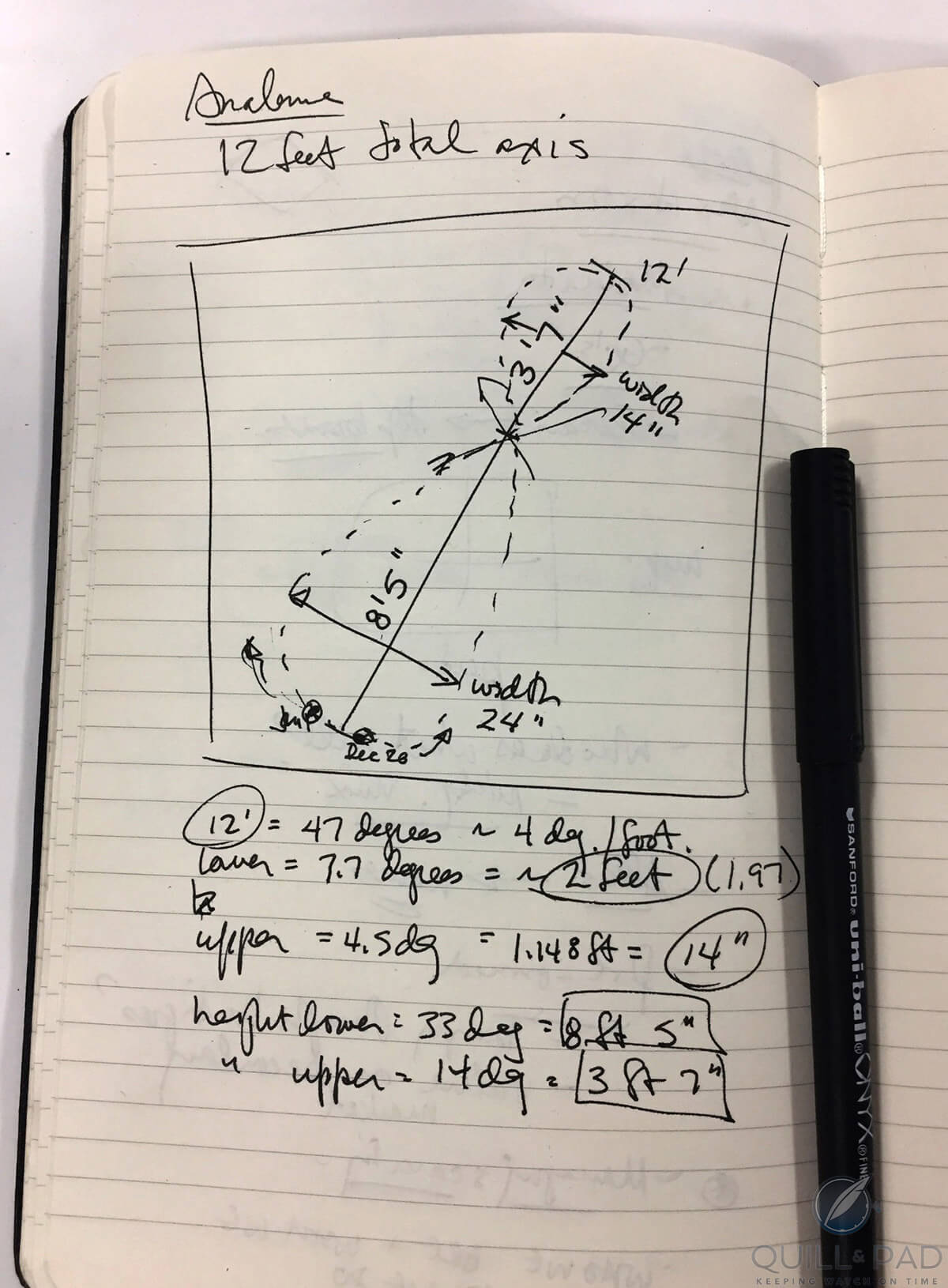
Analemma calculations, to scale
As day turned to night and she prepared to paint the clothes I would wear the following day, Alexa sent me off with a homework assignment: why this topic?
Why is timekeeping so important to me that it occupies an inordinate percentage of my waking thoughts and not a few of my dreams?
What is it about our place in the universe and the relationships between the positions of earth, sun, and moon that I find worth pondering?
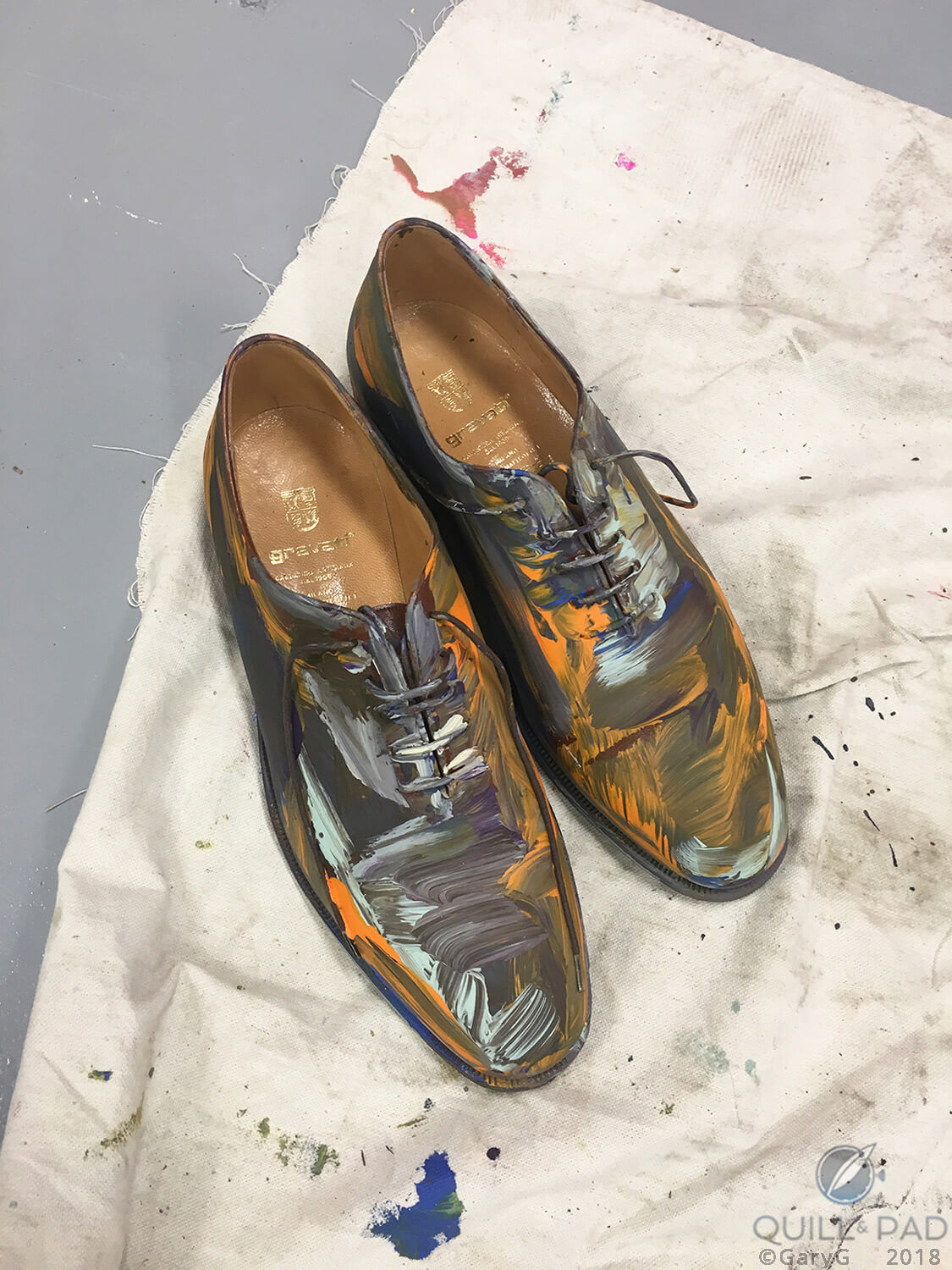
Transforming the clothes: the author’s shoes receive the Meade treatment
Shooting day and realizations
“’Time is experience. Time is a non-thing; it has no physical properties – or it has infinite physical properties . . . Time is only understood in here.’ He thumped his chest.” ̶ Alexa Meade’s artistic inspiration, Robert Irwin, as quoted by Lawrence Weschler
After months of planning and a long day of onsite preparation, it was show day! There’s so much to say about it, but perhaps it’s best to start with the product of the shoot that drew on my “homework” of the prior evening: the behind-the-scenes video directed by Meade and shot and edited by video wizard Jeffrey.
My closing remark in the video about brilliance in conception and excellence in execution was not said lightly; I was consistently impressed by Meade’s insistence on doing things right, even if it meant scrapping an initial effort and starting over.
I later learned that when she paints a piece of furniture for one of her works, she covers not only the visible parts but also the sides, back, and even the interior surfaces, including the inner drawers, to make them two-dimensional in appearance.
As you might imagine, this immediately reminded me of the great watchmakers who finish and decorate every surface of their movement components, even those hidden bits that might be seen if at all only years later by another watchmaker during a servicing.
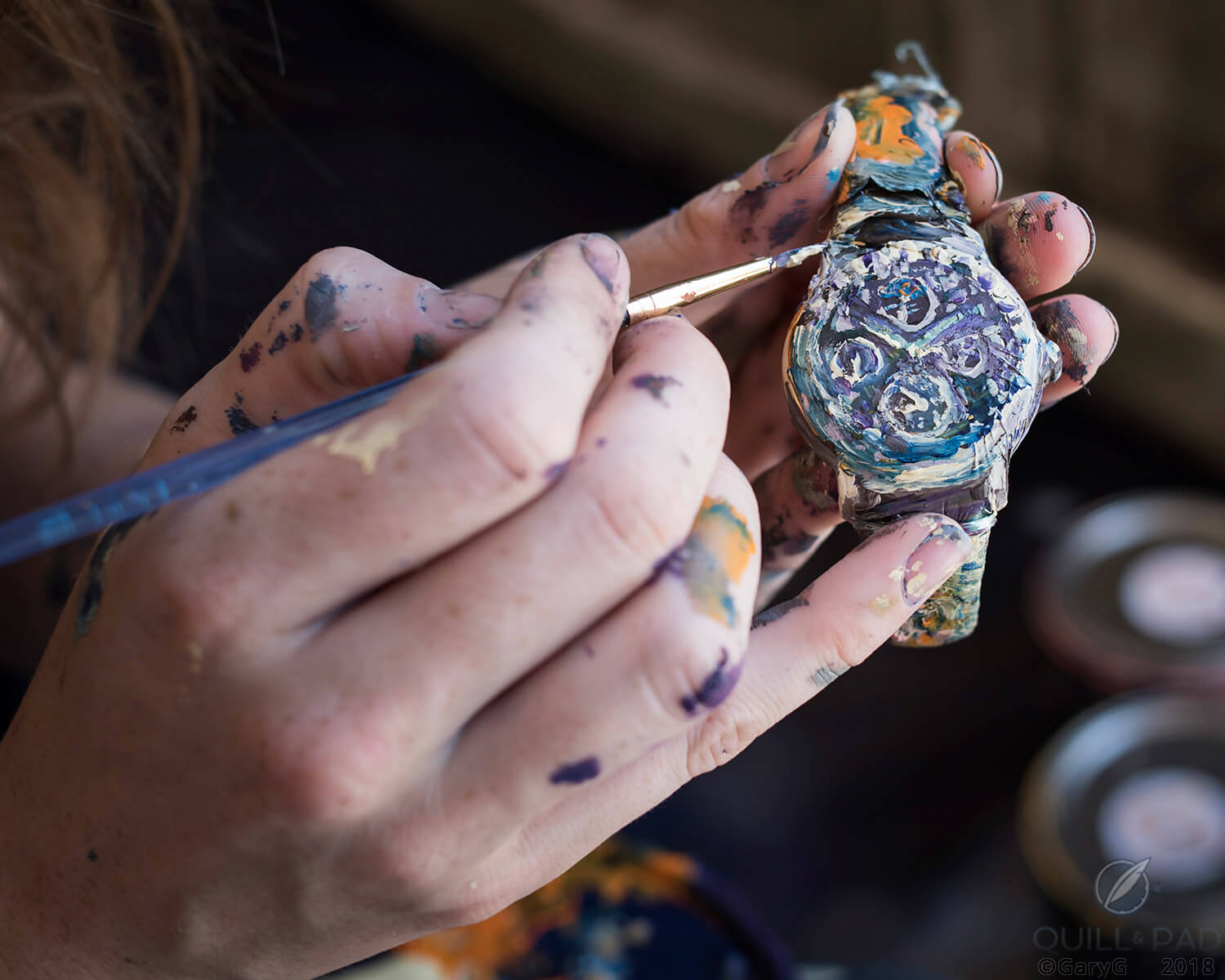
Attention to detail: Alexa Meade paints the Jules Audemars Equation of Time
As an example of this diligence, I think Alexa spent the better part of an hour painting the Audemars Piguet watch after it had been tightly wrapped in plastic. If you know the watch at all, it is quite recognizable in the photo above even after having been completely painted, complete with moon phase, main and equation of time hands, subdials for the other indications, triangular indices capped with greenish lume segments, and bezel markings of the equation itself.
With the team’s preparations finished, and once we had completed the recorded interview that was excerpted for the behind the scenes video, it was time to dress and have my hands and face painted.
This final part of the transformation process is probably what people primarily envision when they think of what it’s like to work with Meade, but at this point we were already four hours into our second day with many more hours to go!
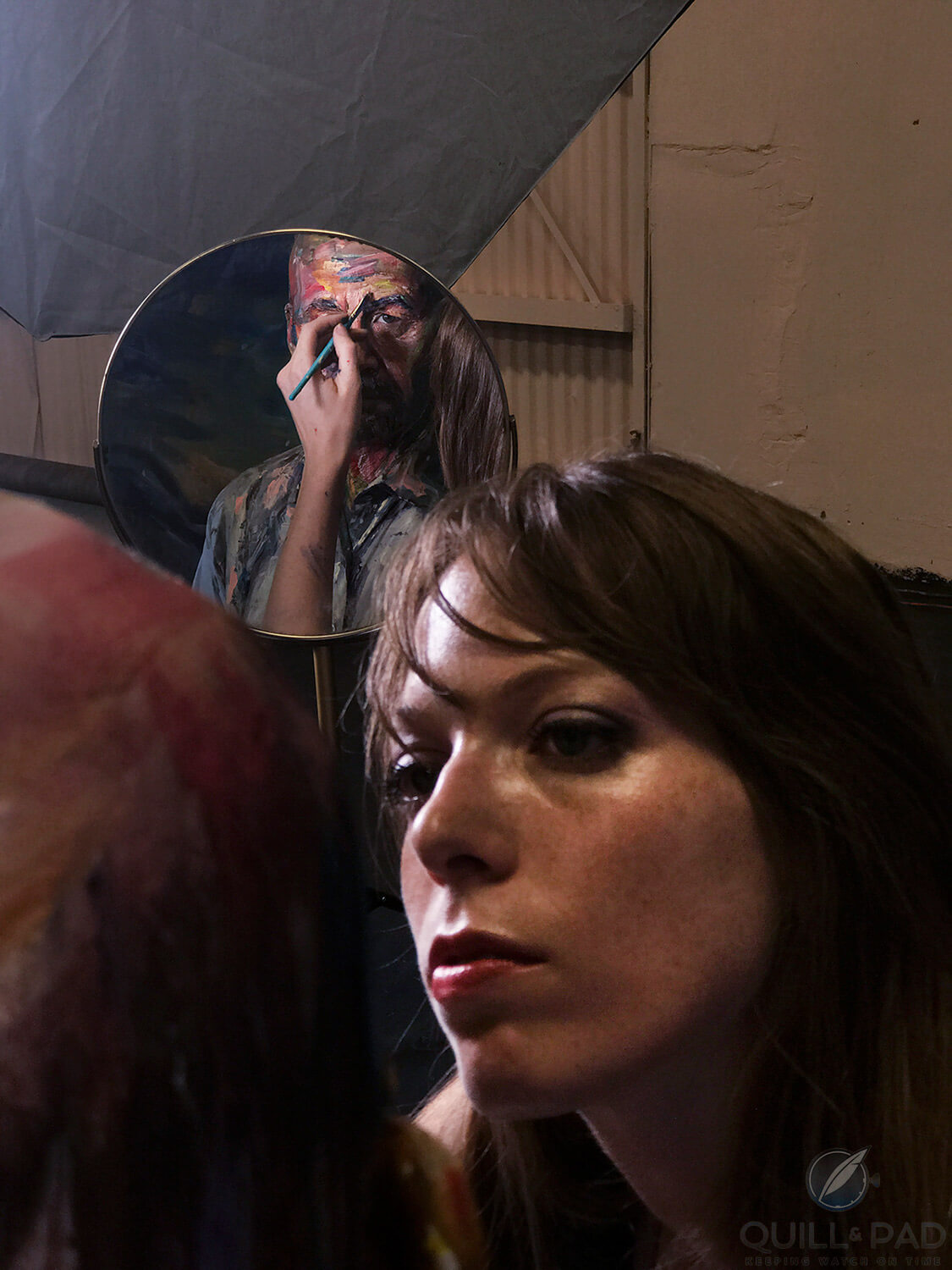
Life becomes art: Alexa Meade paints the author while you watch (all rights reserved, Alexa Meade)
The candid shot above is one of my favorite captures: as an observer you see Meade intently executing her vision, while the circular mirror in the background could almost as easily be a painting in a round frame except for the obvious presence of my eye looking at you.
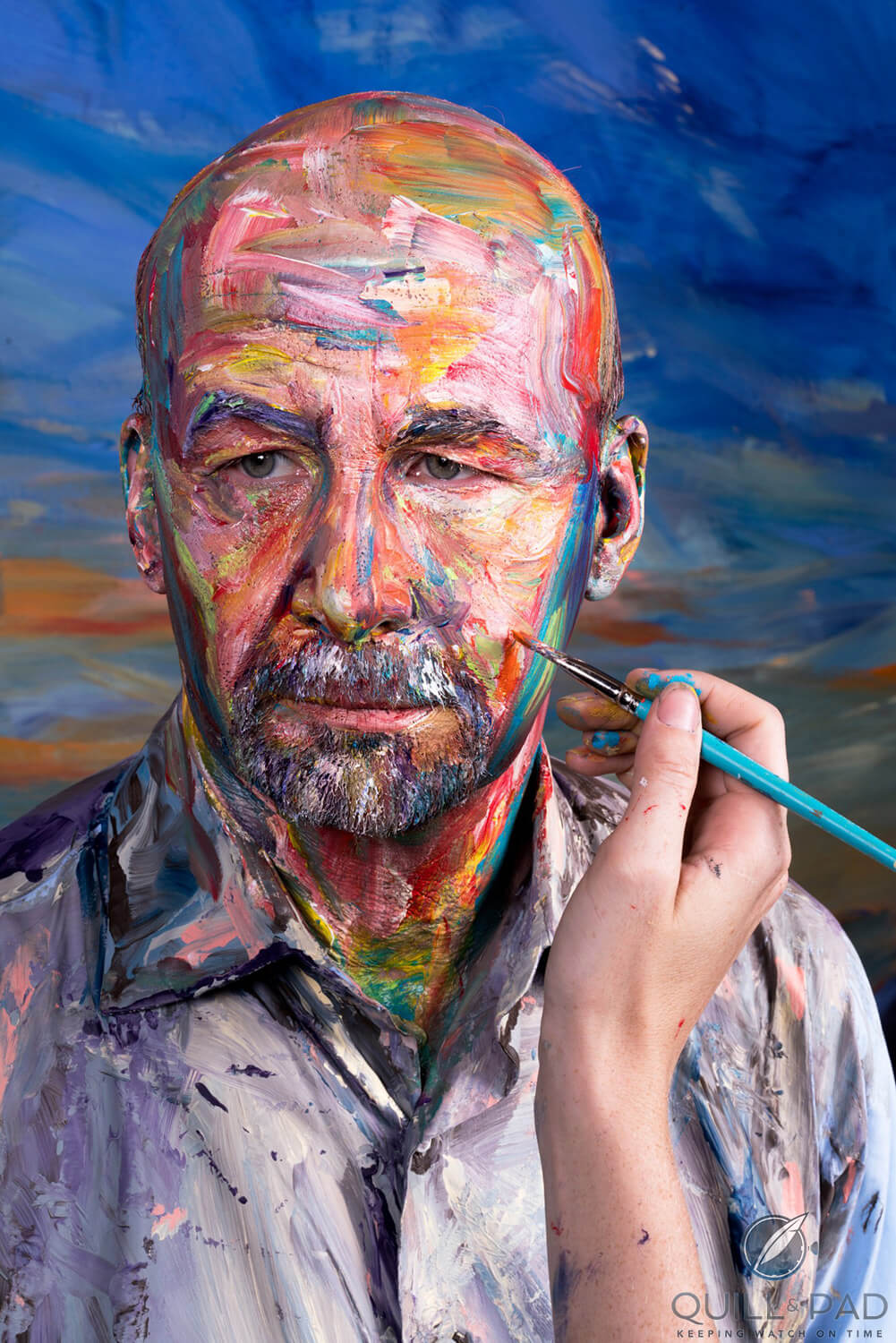
Clash of dimensions: “Watching to Completion” by Alexa Meade (all rights reserved)
Seen from the other side in the image above, the transformation is almost complete. To my eye, Meade’s hand and brush appear to hover above the frame, applying the final touches to a flat canvas, bringing to mind M.C. Escher’s famous 1948 lithograph “Drawing Hands” in which two fully dimensional hands that reach outside the canvas draw each other’s two-dimensional cuffs within the frame.
Finally, it was time to start the formal photo shoot! We began with some close-up captures of my hands, watch, and face; in the 35°C (95°F) heat of the studio it was best to get these early before the paint began to show signs of wear.
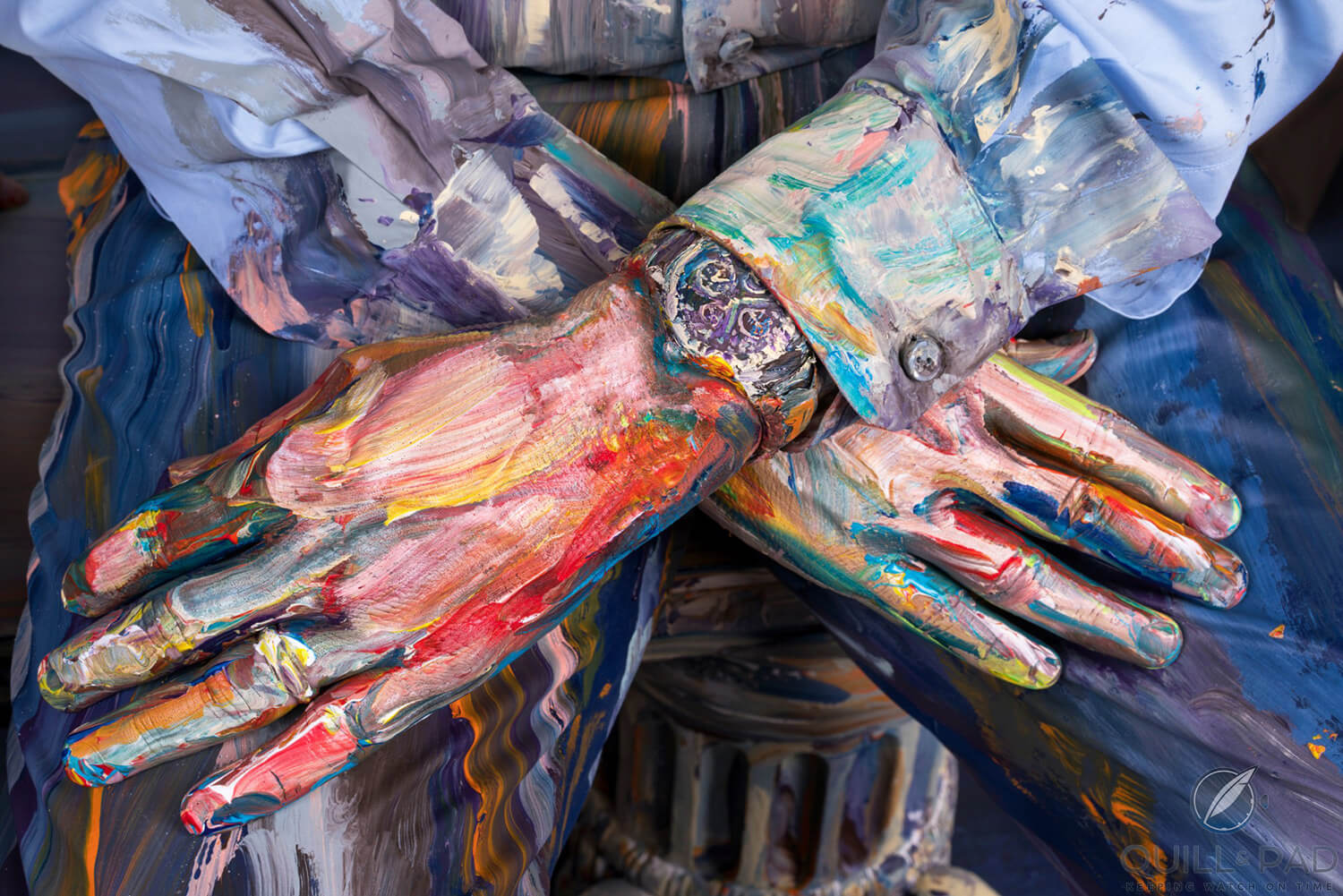
Watch the watch: with the Jules Audemars Equation of Time (all rights reserved, Alexa Meade)
Next up was a series of static shots in front of the skyscape, both with and without the painted dots representing the analemma.
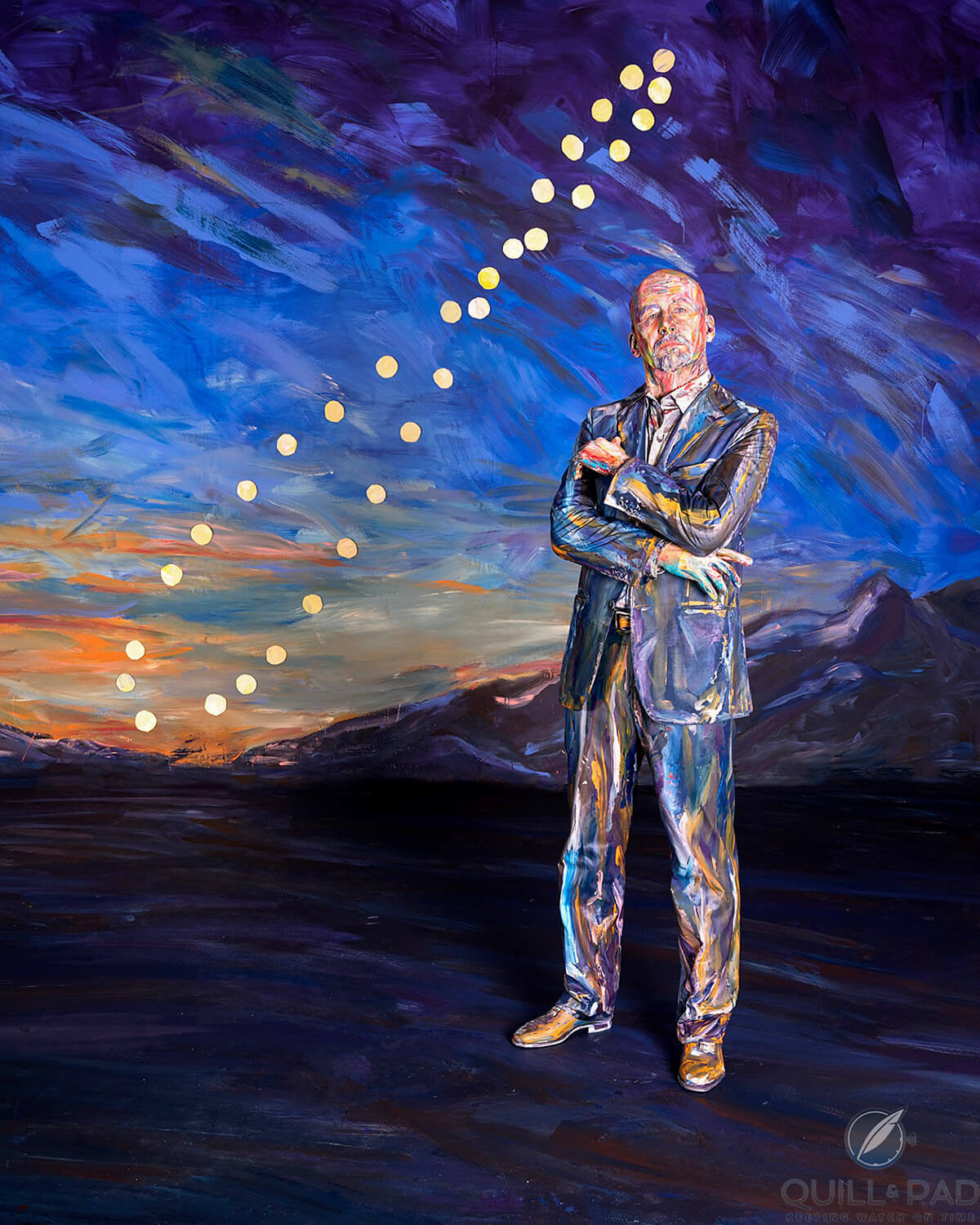
“Watch the Analemma” by Alexa Meade (all rights reserved)
As part of the commission, I selected a few of the images to be printed in large format for framing; at the top of my list was the image below, which incorporates a beautiful play of light and shadow; it is one of the most “painting-like” photos from the day, signaling the commission’s theme by featuring the equation of time watch. For me. it brings to the surface one of my key traits: the ability to look to future possibilities and move ahead despite current difficulties.
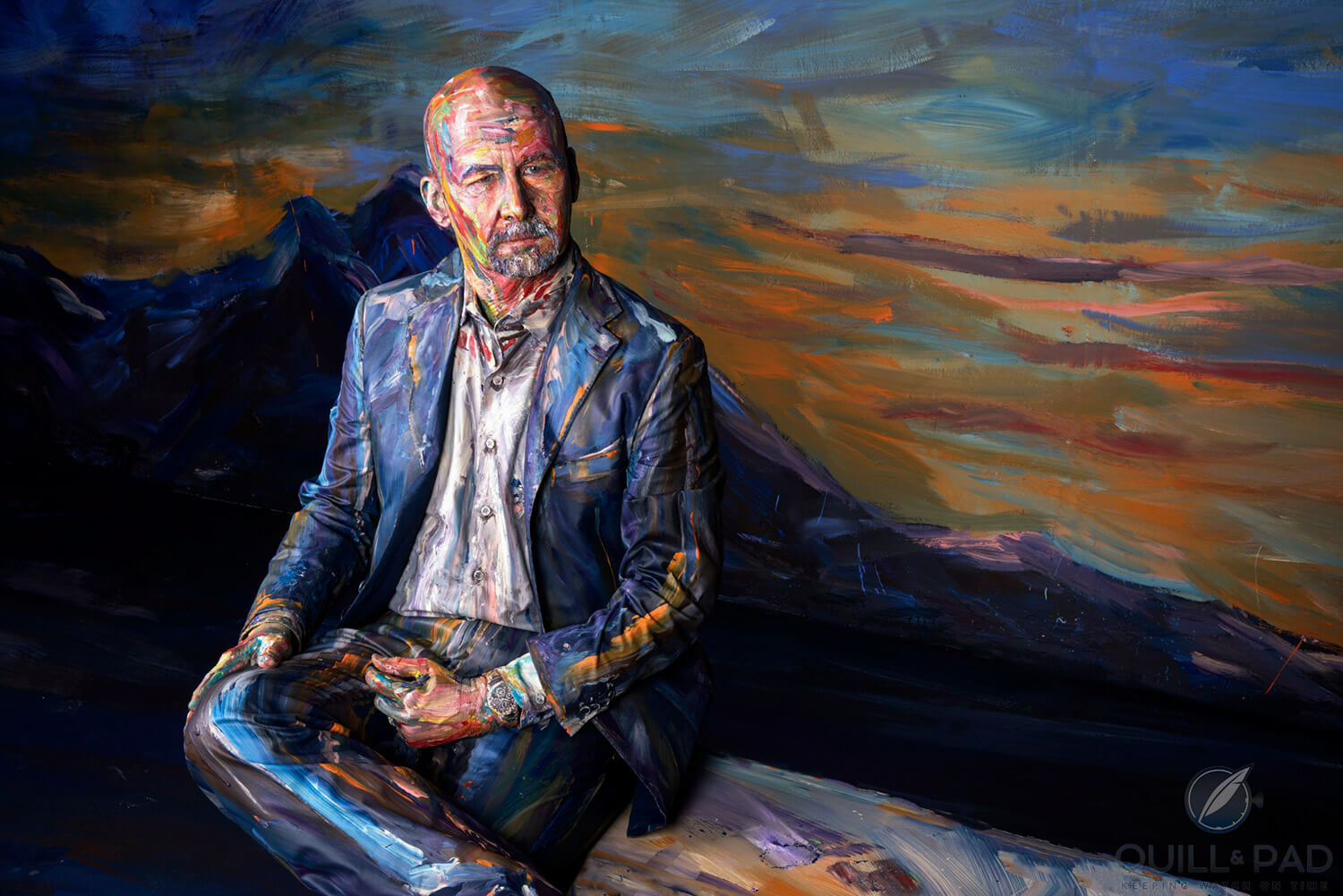
“Watching the Landscape” by Alexa Meade (all rights reserved)
That may seem a bit touchy-feely, but I found the experience of existing within an artist’s interpretation of me to be a profound and highly emotional experience. Being inside a painting of yourself is hard to describe; analogies that come to mind are a suit of armor or a sensory deprivation tank – an experience that melds a sense of heightened awareness and a deep feeling of isolation, even in the midst of the beehive of activity that is an artist’s photo shoot.
And so I started to think.
What about capturing time and being mindful of its passage is so important to me?
Time goes on and on, but our time comes to an end; how can I make mine more meaningful?
And what of the too many friends and family members whose time has already passed and who I sorely miss?
Without a word having been exchanged, Meade somehow discerned and captured my feelings in the image she entitled “Watching with Grief,” which I chose as my second photo for printing.
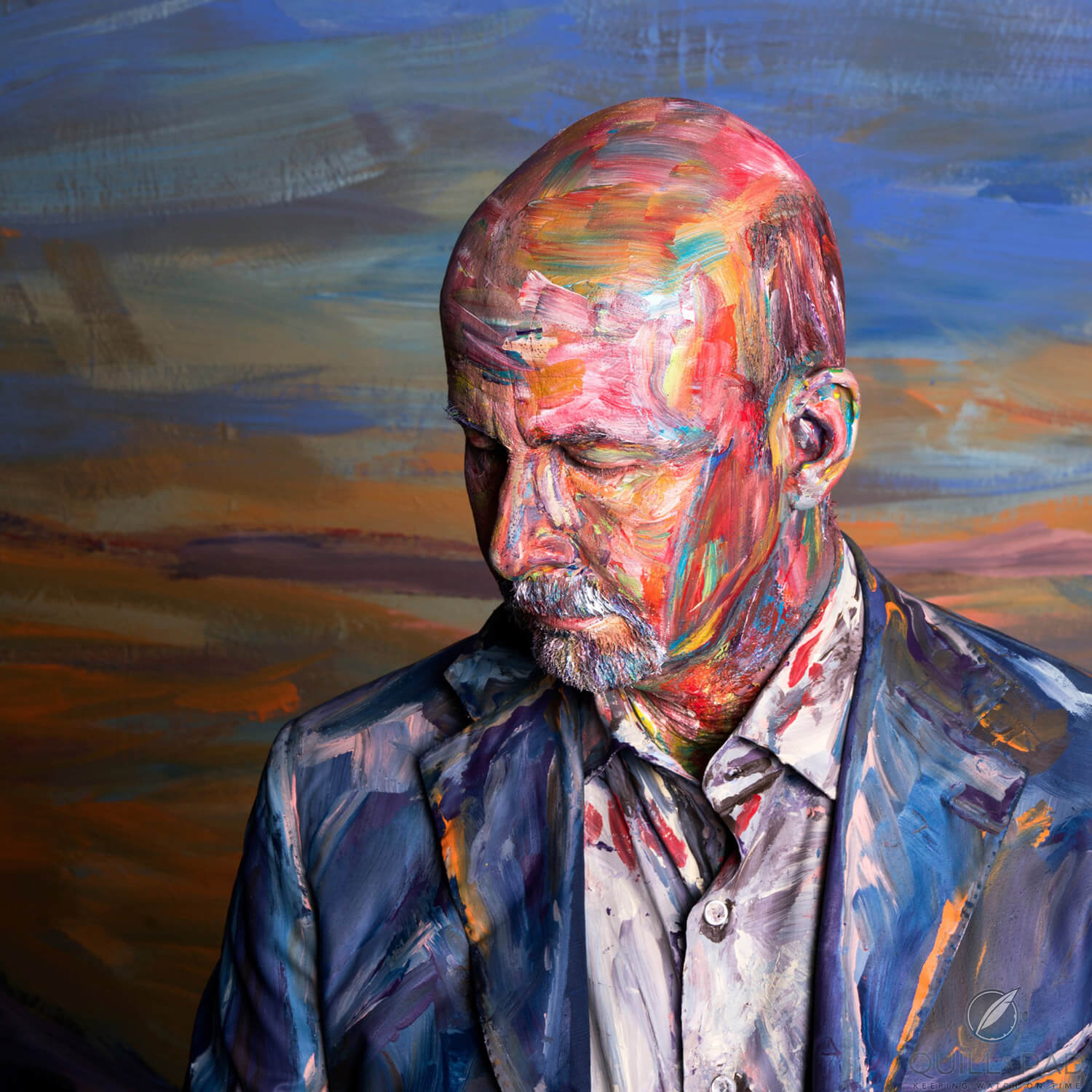
“Watching with Grief” by Alexa Meade (all rights reserved)
Freezing time, then putting motion back in
“Yeah I know she hung the moon ‘cause I’m the one that held the ladder.” – Scott Emerick and Toby Keith, “I Know She Hung the Moon,” 2007
In our preparations, we had talked at length about how to capture the phenomenon of the analemma and finally settled on the idea of stop-motion video. It wasn’t until I’d arrived in Los Angeles that Meade suggested adding the phases of the moon to the mix, which expanded the stop-motion plan as well.
The work to do this consumed four very warm hours as assistants Ashley and Britt first positioned the suns and moons and then removed them one by one as I moved inch by inch between shots. To speed the filming process, we actually shot the images that make up the video below in reverse order and then Jeffrey sequenced them backwards during editing to give the appearance of my putting on my glasses, checking my watch, and directing the emergence of the analemma starting with the sun at its lowest point and proceeding throughout the year.
Finally, it was time to wrap up, with the Meade studio tradition of photographing the members of the team inserted into the frame of the work of art. That was another interesting experience as I got the distinct sense that the others experienced this not as an interaction with me, but as a chance to be photographed with an art object – who just happened to be me.
I thought back on my experience with Meade in Basel and realized that I’d done the same when I had the chance to be photographed with the painted model at the Maurice Lacroix shoot. Funny how you tend to recognize being treated differently only when you’re the recipient of the treatment!
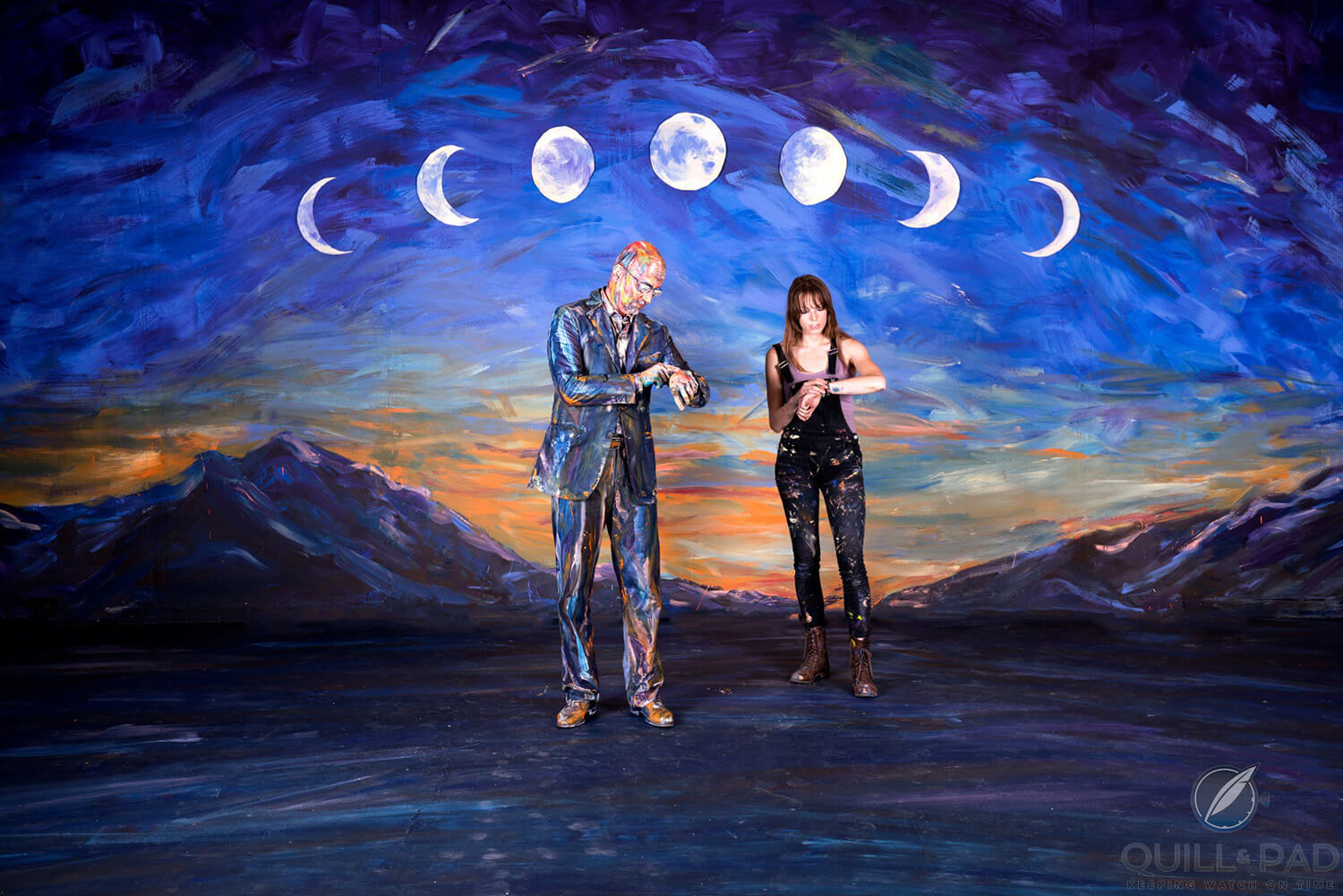
“Watching the Time with Alexa” (all rights reserved, Alexa Meade)
Final thoughts
“I love the idea that I can paint my interpretation of the world on top of itself to create something that resembles what is real but feels far removed . . .” – Alexa Meade, “The Art of Transformation: Alexa Meade for BASF”
Over the next weeks, I had the wonderful opportunity to review the various images and videos that Meade had selected from the wealth of materials created during the session. For my final printed image, I chose “Watchman,” shown below. It’s drawn some varied responses from my friends; while most like it, some find its sense of isolation – and perhaps even an illusion that I am levitating in space – a bit disconcerting. I love it, both visually and as a representation of my resolute nature, which I see as a positive even though it sometimes leads me to stand alone.
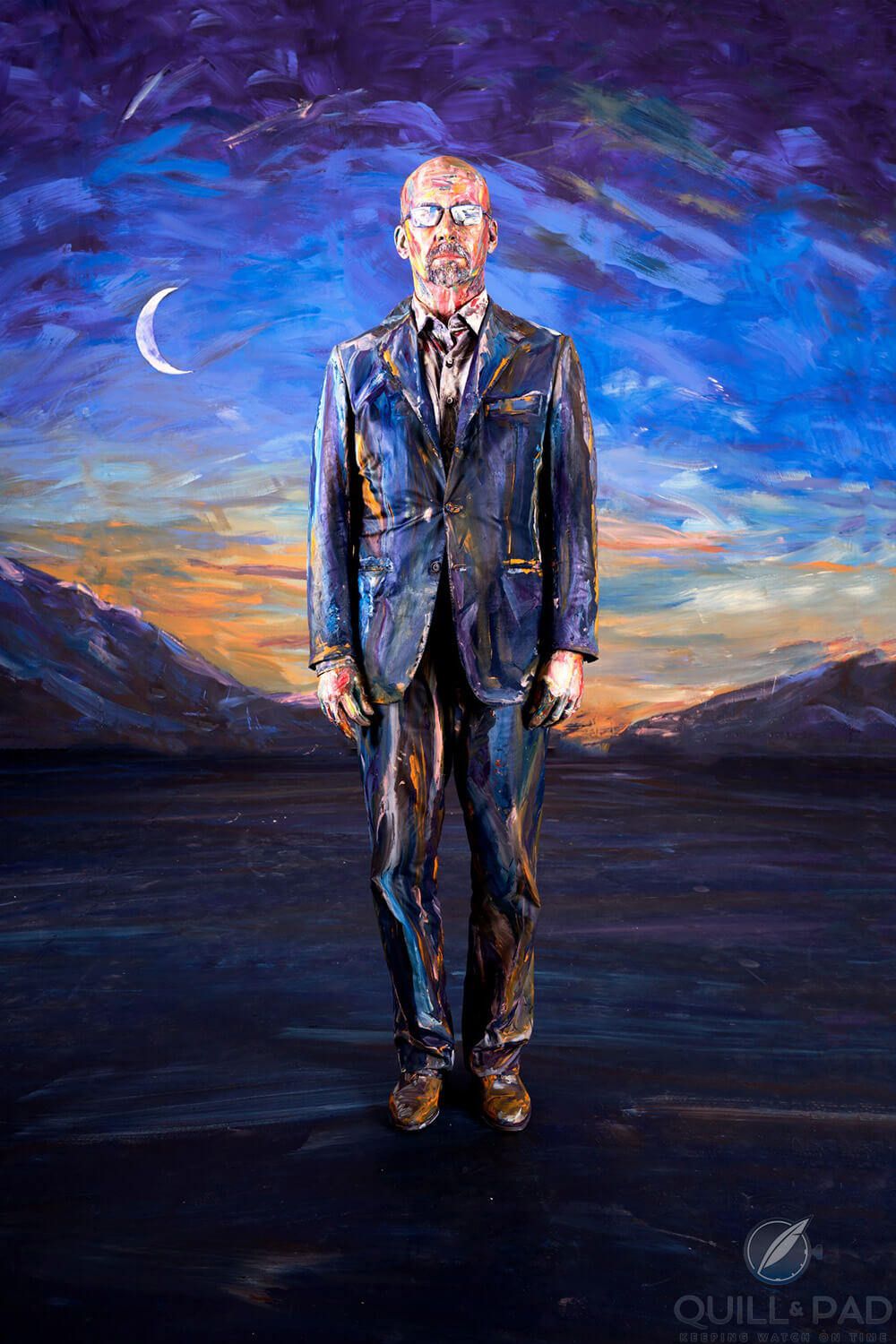
“Watchman” by Alexa Meade (all rights reserved)
Upon reflection, I was quite surprised that the images I selected for printing featured only one small crescent moon as an accent and didn’t include the analemma at all. When I mentioned this to Meade, her response perfectly summarized the journey we’d been on: “It took the sun and the moon to bring us to this place, but that doesn’t mean we have to stay there!”
A wise woman, that Alexa Meade.
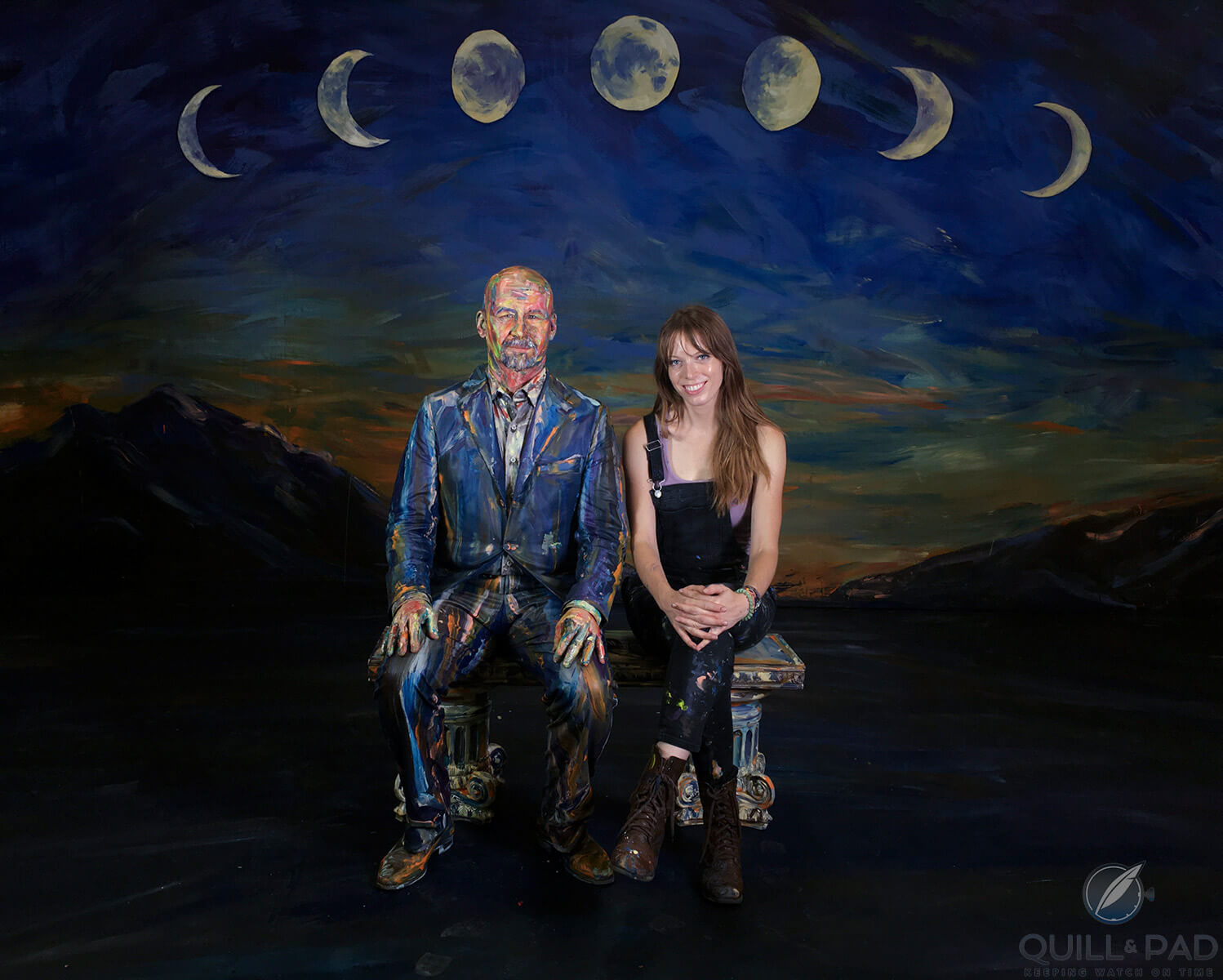
Parting shot: GaryG and Alexa Meade (all rights reserved, Alexa Meade)
For more information about Alexa Meade and her art, please visit www.alexameade.com.
Quick Facts Audemars Piguet Jules Audemars Equation of Time
Case: brushed white gold with polished bezels; 39 x 12 mm; sapphire case back; city location, mean time of solar noon, and equation of time indicators engraved on bezel
Dial and hands: textured anthracite dial with applied gold and luminous markers, recessed gold-edged subdials, and printed indications; white hands with luminous centers and gold “sun” on the equation of time hand
Movement: automatic Caliber 2120/2808; 2.75 Hz/19,800 vph; bidirectional 21-karat gold rotor turning on four ruby runners; power reserve approx. 40 hours
Functions: hours, minutes; perpetual calendar; moon phase; equation of time; times of sunrise and sunset at a selected location
Original retail price: approx. $79,000
Recent advertised pre-owned prices: $27,000 to $35,000



Leave a Reply
Want to join the discussion?Feel free to contribute!